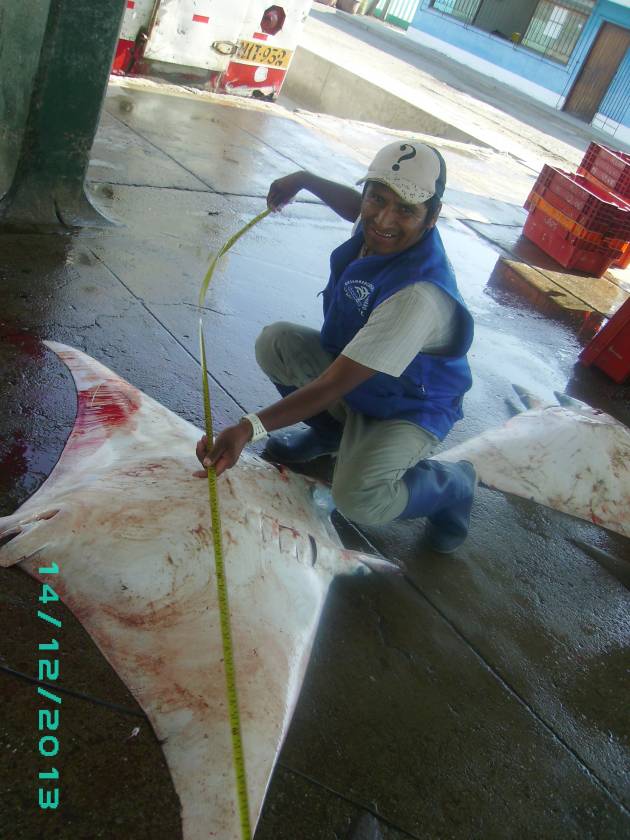Mobulid ray fishery according to fishermen
We conducted a questionnaire survey in Zorritos, Acapulco and Cancas, all of them in Tumbes. Tumbes has a total of 3,447 fishermen (8% of all Peruvian fishermen) and catch species like: Peruvian rock seabass (Paralabrax humeralis), Peruvian weakfish (Cynoscion analis), Corvina drum (Cilus gilbert), Striped mullet (Mugil cephalus).
Zorritos is one of the landing ports with major number of fishermen in Tumbes. Population who depends of fishery is 7000 people. A total of 153 vessels and more than 2000 fishermen work in that port. More than 300 fishermen with 100 vessels work in Acapulco. Population who depends of fishery is 1400. Meanwhile, population who depends on fishery in Cancas is 3300 people. A total of 200 vessels and more than 600 fishermen work in that port (Martinez& Pérez, 2013).

Angel Pazo, a fisherman and observer, measuring a Mobulid in Acapulco, Tumbes. © APECO
This first approach to the Mobulid catch and bycatch in the main landing ports shows that main fishermen considered a problem this catch and also to trade the Mobulid rays is too cheap. The gears used by these fishermen were: bottom and surface gillnets, longlines and purse seines.
Most of them use gillnet and the catch areas (for Mobulid rays) are located in the first 20 nm. Catch areas were located in front of: Zorritos, Cancas, Mancora, Acapulco, Malpelo, Playa Hermosa, Punta Sal, La Cruz, Punta Mero, Peña Redonda, Puerto Pizarro and in Banco Grande and Banco Chico.
Few fishermen (only 2 from 96) accepted use of harpoons to catch Mobulid rays. However, 55% knows that other fishermen used harpoon to catch Mobulid rays.
Fishermen identified three types of manta rays due to color flesh: Black or horned manta (Manta birostris), pink and white manta (Mobula spp.). The Mobula spp (maximum $1.1 per K) has higher price than Manta birostris (minimum $ 0.15 per K). According to fishermen, landing ports of Mobulid rays are: Acapulco, Puerto Pizarro, Zorritos, La Cruz, Cancas, Mancora, in Tumbes and Paita, El Ñuro, and Bayovar in Piura.

